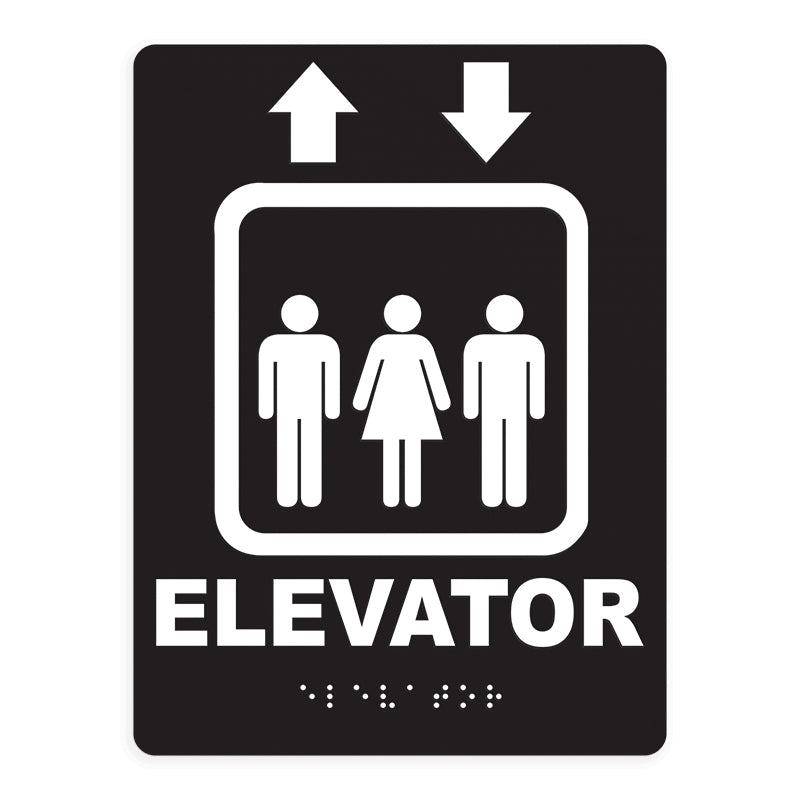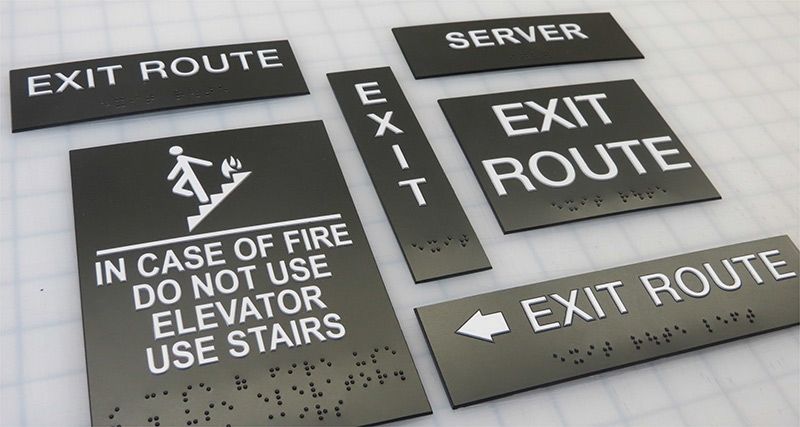ADA Signage: Making Sure Access and Conformity in Public Spaces
ADA signage plays an indispensable role in ensuring accessibility and conformity within public rooms, considerably contributing to an inclusive atmosphere for people with impairments. By sticking to ADA standards, signage not just helps with navigating but likewise emphasizes an organization's commitment to variety and equality. As we explore the subtleties of ADA signs, from tactile functions to make intricacies, it's vital to consider exactly how these aspects integrate to copyright the legal rights of all individuals. What are the usual pitfalls organizations deal with in keeping conformity, and how can future trends in signage continue to drive availability forward?
Importance of ADA Signs
In modern-day culture, the value of ADA signs prolongs beyond mere compliance with legal requireds to personify a commitment to inclusivity and ease of access for all individuals. These indicators are essential in developing settings where people with specials needs can navigate public spaces with the very same convenience and self-reliance as those without specials needs. By offering clear and standardized info, ADA signage makes certain that everybody can access facilities, solutions, and information without obstacles.
The relevance of ADA signage depends on its capacity to boost the high quality of life for people with handicaps by advertising equal accessibility. It gets rid of the obstacles that could otherwise hinder their capacity to take part totally in neighborhood life. These indicators serve as noticeable signs of a company's commitment to variety and equality, mirroring broader social worths that champion the civil liberties and dignity of all people.
Moreover, ADA signage plays an important duty in public security. By leading individuals to departures, restrooms, and various other essential facilities, it makes certain that all people, no matter of physical ability, can leave securely during emergency situations. In recap, ADA signage is not just a governing requirement however an effective tool for promoting a equitable and comprehensive culture.
Crucial Element of Compliance

Positioning is crucial; indicators have to be mounted in areas that are conveniently noticeable and obtainable. Normally, signs must be installed in between 48 and 60 inches from the ground to make sure availability for both standing and mobility device individuals. Tactile elements, such as Braille, are important for individuals with visual impairments, providing essential details in a non-visual layout.
High-contrast shades between the text and history are essential to improve readability for people with low vision. The ADA mandates specific comparison proportions to make sure clearness. Furthermore, character size is a key factor to consider, with minimal height requirements determined by the checking out distance to ensure readability from numerous angles.
Style Considerations for Accessibility
Creating easily accessible signage requires a thorough technique to ensure it fulfills the requirements of all users, specifically those with impairments. This involves taking into consideration different design components that enhance readability and use. Secret factors consist of the choice of font style, shade comparison, and tactile attributes. Font styles should be sans-serif, with easy and clear letterforms, to promote simple analysis. The size of the message is just as vital, with ADA guidelines suggesting a minimal height based upon viewing distance to make certain readability.
Contrasting colors between text and background are vital for exposure, especially for individuals with aesthetic disabilities. Furthermore, tactile aspects, such as Braille and increased characters, are important for individuals who are blind or have low vision.
Additionally, the placement of signs plays a significant role in accessibility. Indicators need to be mounted in places that are quickly reachable and unblocked. Ensuring that signage is mounted at appropriate heights and angles makes it possible for all customers, consisting of those utilizing wheelchairs, to engage with them properly.
Usual Blunders to Prevent

Another common error is the wrong placement of signage. ADA standards specify exact height and area requirements to ensure that indications are obtainable and easily noticeable by all individuals, consisting of those using mobility devices. Neglecting these standards not only obstructs ease of access yet also takes the chance of non-compliance with legal requirements.
Additionally, inadequate comparison between message and background is a regular oversight. Adequate contrast is crucial for readability, especially for people with low vision. Developers sometimes choose colors that are aesthetically enticing but do not have the essential contrast, making the message difficult to discern.
Finally, some developers fall short to integrate responsive components, such as Braille, which are crucial for individuals that are blind. Leaving out these attributes not only results in non-compliance with ADA guidelines yet additionally restricts access for a section of the populace that relies on tactile information.
Future Trends in Signage
Innovations in technology and increasing understanding of inclusivity are shaping the future patterns in signs layout. As why not find out more culture becomes much more mindful of diverse demands, the assimilation of smart innovations into signs is obtaining grip. Digital signs, as an example, is advancing to consist of interactive attributes and real-time updates, which can be critical in providing vibrant details in public rooms. These indicators usually include touch see here displays or gesture-based controls, making it possible for customers to browse content tailored to their specific requirements.
One more emerging fad is the usage of augmented truth (AR) to enhance customer experience. AR-enabled signage can overlay electronic information onto the physical setting, offering aesthetically impaired people with auditory or haptic feedback. ADA Signs. This modern technology not only boosts ease of access yet likewise develops an appealing experience for all customers
Sustainability is also a substantial aspect affecting signage patterns. Environmentally friendly products and energy-efficient lighting services are being focused on to align with worldwide ecological goals. Developments in products scientific research are leading to the development of more long lasting and weather-resistant signs.
Final Thought
ADA signs plays an essential role in ensuring availability and conformity within public spaces by integrating responsive components, high-contrast shades, and strategic placement. The adherence to ADA criteria not just helps with risk-free navigating for people with disabilities however additionally signifies an organization's commitment to diversity and inclusivity. By staying clear of common errors and accepting future patterns, public rooms can proceed to progress these worths, making certain that the rights and dignity of all individuals are respected and supported.
ADA signage plays an essential role in ensuring ease of access and compliance within public areas, substantially adding you could try these out to an inclusive setting for people with specials needs. As we discover the subtleties of ADA signage, from tactile features to design intricacies, it's crucial to take into consideration just how these aspects coalesce to copyright the rights of all customers.In contemporary society, the importance of ADA signage expands past simple compliance with lawful requireds to symbolize a commitment to inclusivity and availability for all people. By providing standardized and clear information, ADA signs makes sure that everybody can access facilities, solutions, and information without obstacles.
ADA signage plays a vital duty in ensuring accessibility and conformity within public spaces by including tactile components, high-contrast shades, and strategic positioning. (ADA Signs)